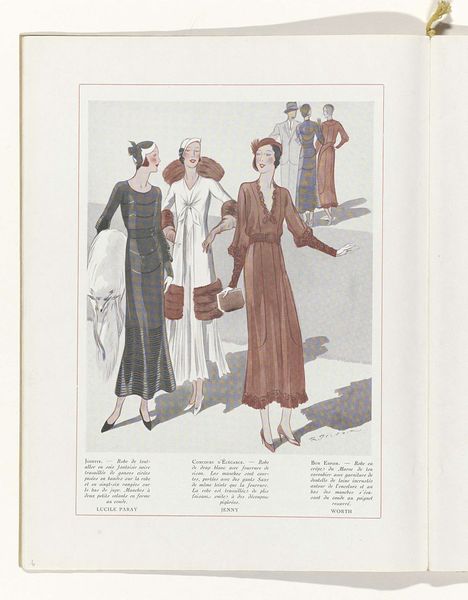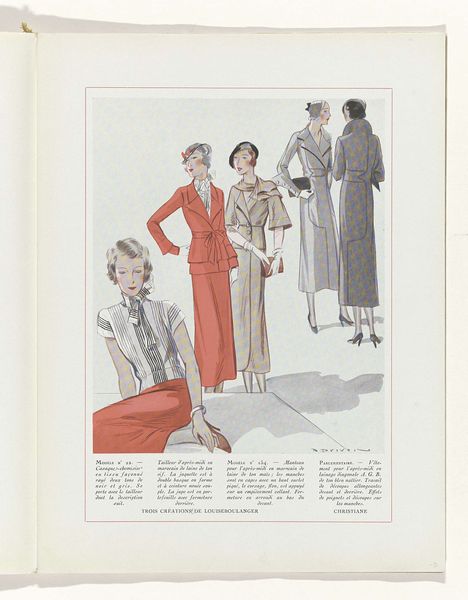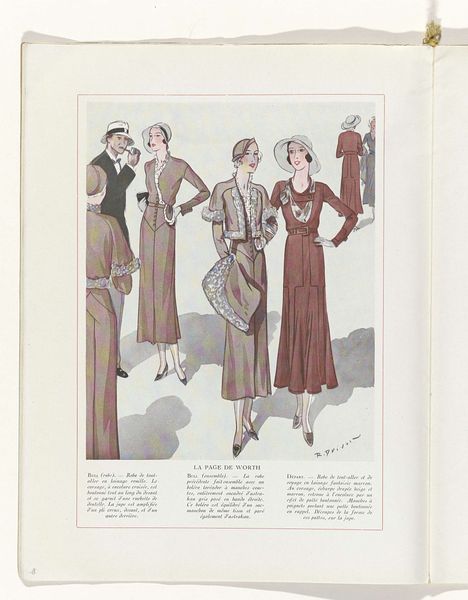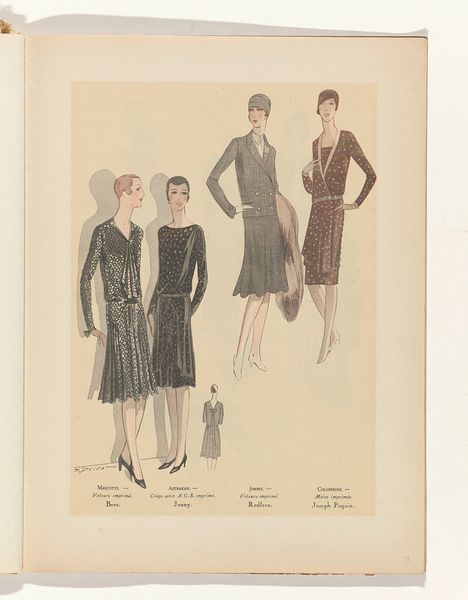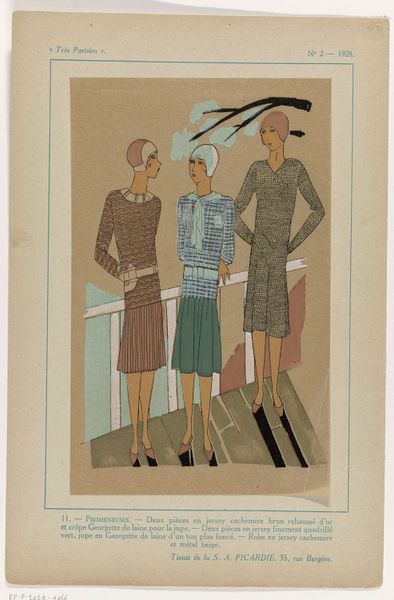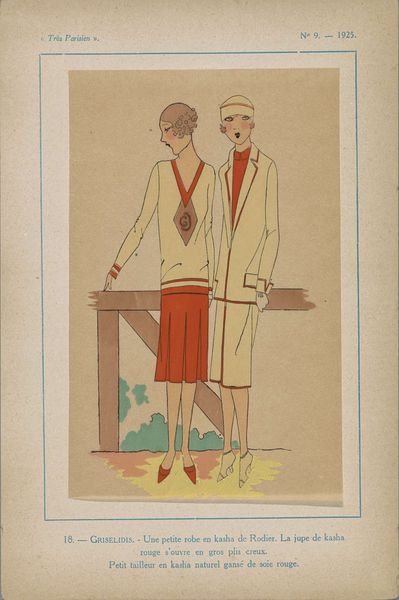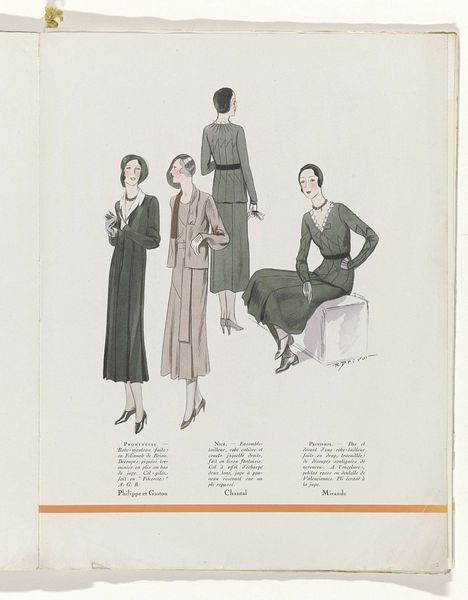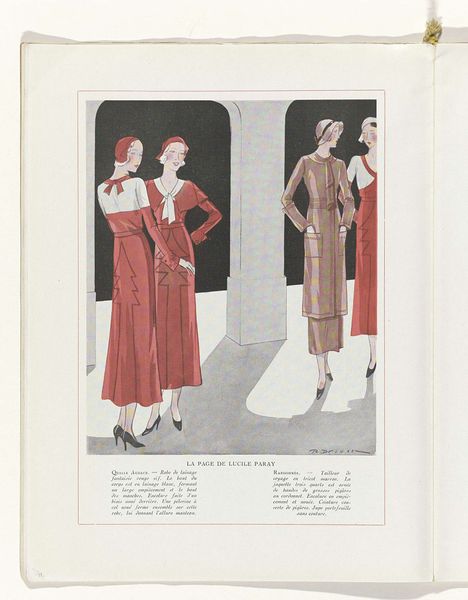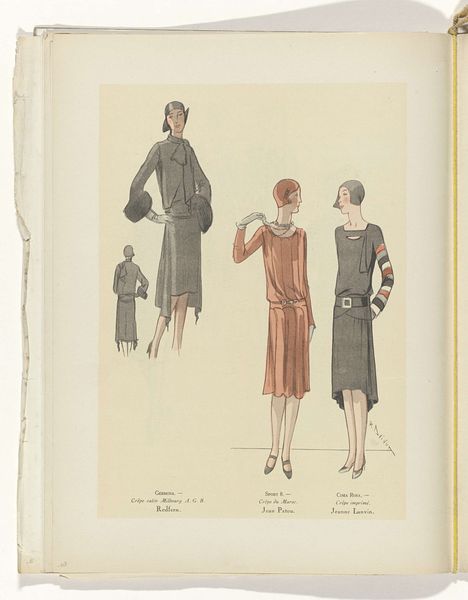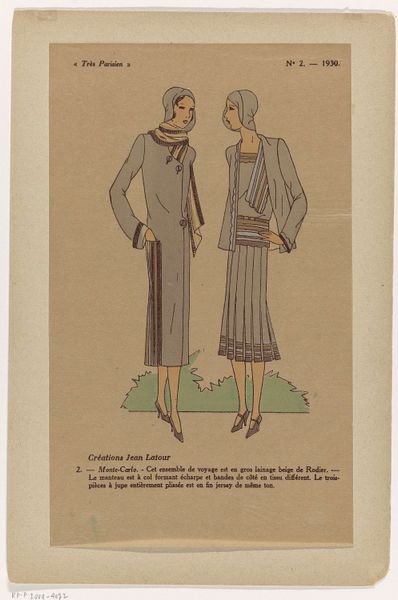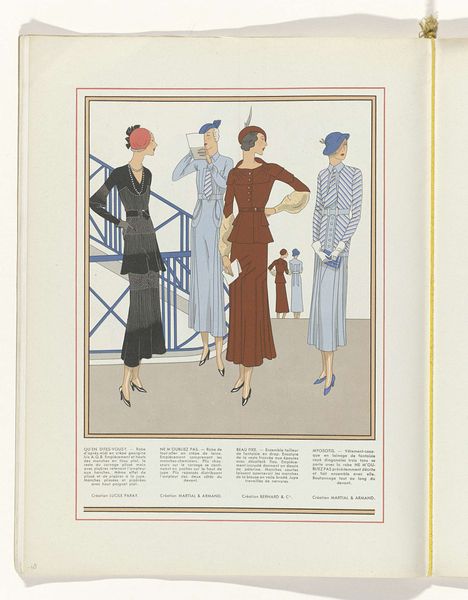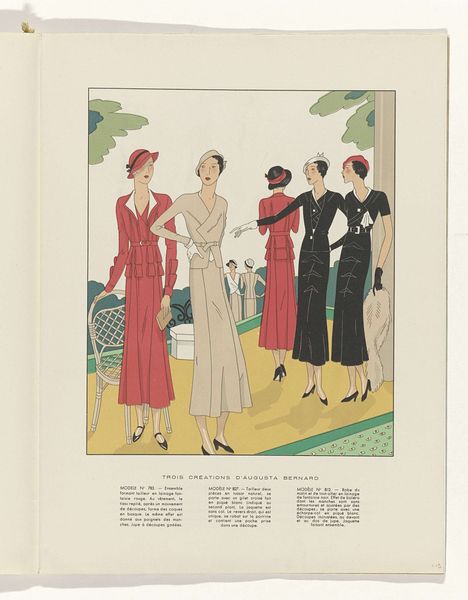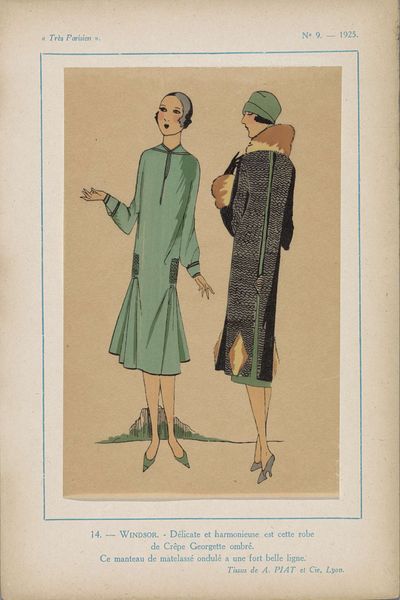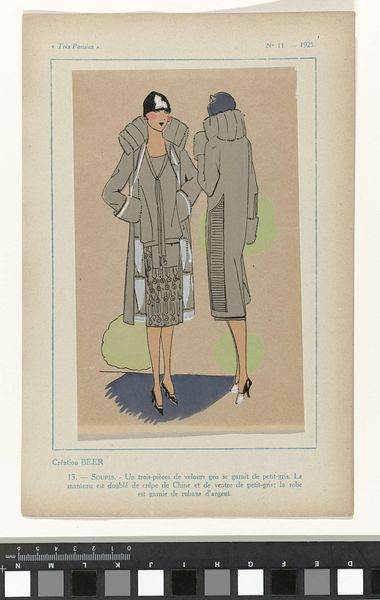
graphic-art, poster
#
portrait
#
art-deco
#
graphic-art
#
magazine cover layout
#
figuration
#
historical fashion
#
poster
Dimensions: height 370 mm, width 287 mm
Copyright: Rijks Museum: Open Domain
Editor: Here we have "The Fashion Magazine as Temptress," a 1935 poster from the Rijksmuseum. I’m struck by how staged and deliberate it feels. What does this image tell us about its time? Curator: It's fascinating, isn't it? We need to consider this within the historical context of the 1930s, a period grappling with economic hardship and shifting social roles. This isn't just about showcasing fashion; it's about selling an aspiration. Notice how the magazine positions itself, literally in the title as something tempting, and how that temptation might speak to social anxieties. Editor: Anxieties? Like what kind? Curator: The promise of upward mobility through consumerism. The magazine offers a vision of elegance and sophistication seemingly attainable by purchasing the depicted garments. But what is the true cost to that "attractiveness?" Is that about self-expression, or about fitting into a specific mould shaped by advertisers? What's particularly telling is the implicit message about the domestic role of women. Editor: Right, it is definitely targeted to women! The magazine cover presents idealized figures in carefully curated settings...So you think this is a window into the constructed ideals of femininity at that time? Curator: Exactly. Consider the limited roles afforded to women, primarily within the domestic sphere. These fashion magazines became powerful vehicles for shaping those roles. The “temptation” is the lifestyle and ideal tied into buying into fashion of the time. Are the depicted clothes supposed to liberate women or bind them in these constructed standards? Editor: That makes so much sense! I’d originally seen just a vintage magazine cover, but now I’m seeing a complex conversation about society and aspirations being had through graphic art. Curator: Precisely! It prompts us to ask critical questions about how images shape our perceptions and desires, and about the social power embedded within seemingly innocuous objects like fashion magazines.
Comments
rijksmuseum almost 2 years ago
⋮
The first fashion magazines were sold only by subscription. They have nondescript covers, with neither text nor image. This changed at the end of the 19th century when the publications came to be displayed in stands and shops. Publishers went to great lengths to entice potential buyers by means of attractive covers.
Join the conversation
Join millions of artists and users on Artera today and experience the ultimate creative platform.
